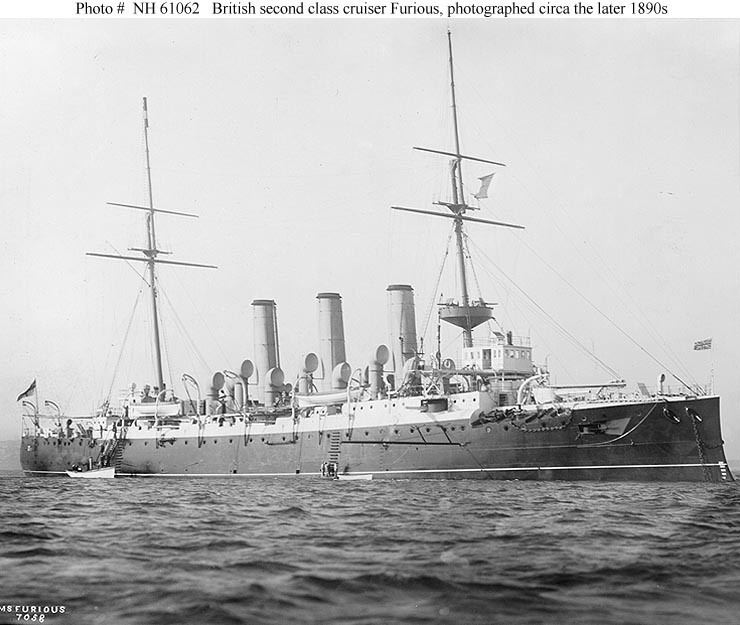In service 1898–1923 | Preceded by Eclipse class Built 1895–1900 Completed 4 | |
 | ||
The Arrogant-class cruiser was a class of four protected cruisers built for the British Royal Navy at the end of the 1890s. One ship, HMS Gladiator was lost following a collision with a merchant ship in 1908, while HMS Vindictive saw active service in the First World War, taking part in the Zeebrugge Raid in April 1918 before being sunk as a blockship during the Second Ostend Raid in May 1918.
Contents
Design
The 1895–96 programme of naval construction for the Royal Navy included provision for four Second-class cruisers of the Arrogant class. While most contemporary Royal Navy cruisers were intended for trade protection, the Arrogant class was designed to operate with the main battle fleet, being intended to finish off crippled enemy ships by ramming, and were originally described as "Fleet Rams".
To suit the class for its proposed role, the ram bow was larger and stronger than normal, and was supported by the ship's protective deck and by 2 inches (51 mm) side armour plating covering the forward part of the ship. While the protective deck had a similar thickness (1.5–3 inches (38–76 mm)) to that of the preceding Eclipse class, the ship's conning tower had much thicker protection than normal, with 9 inches (230 mm) of armour to resist close-range enemy shells. The design had a shorter hull with greater beam and an auxiliary rudder ahead of the main rudder to improve manoeuvrability (with a turning circle of 380 yards (350 m) compared with 650 yards (590 m) for the same-length Astraea-class cruisers).
The Arrogants were the first British second-class cruisers to use water-tube boilers, with 18 Belleville boilers feeding triple-expansion steam engines which drove two shafts, giving a speed of 18 knots (33 km/h; 21 mph). The ships' main gun armament was a mixture of four 6 in (152 mm) guns and six 4.7 in (120 mm) guns, and a secondary armament of eight 12-pounder (76 mm) and three 3 pounder (47 mm) guns, supplemented by 5 machine guns and three 18 in (457 mm) torpedo tubes. The Arrogants, like many of the armoured cruisers built for the Royal Navy, were often criticised by the contemporary press, with the 1896 Brassey's Naval Annual considering that the classes armament and speed were "hardly satisfactory", with unfavourable comparisons made to armoured cuisers being built for export, and ships in service with France and Germany. The ship's armament was strengthened in 1903–04, when the existing main gun armament was replaced by a homogeneous battery of ten 6 inch guns.
History
The four ships were laid down at Devonport and Portsmouth naval dockyards in 1895–96, launching in 1896–97 and were completed between 1898 and 1900.
HMS Gladiator collided with the American liner SS Saint Paul in a heavy snowstorm off the Isle of Wight on 25 April 1908, sinking with the loss of 27 men. Although she was raised in October 1908, Gladiator proved too expensive to repair and was sold for scrap.
HMS Arrogant became a submarine depot ship in 1911, while HMS Furious was paid off in 1912, being renamed HMS Forte in 1915, serving as a hulk attached to the stone frigate (or shore establishment) HMS Vernon. HMS Vindictive served as a tender attached to HMS Vernon from 1912 until the outbreak of the First World War, when she returned to active service. In 1918, Vindictive was converted to an assault ship for the Zeebrugge Raid on 23 April, and following that was scuttled as a blockship during the Second Ostend Raid on 10 May 1918.
